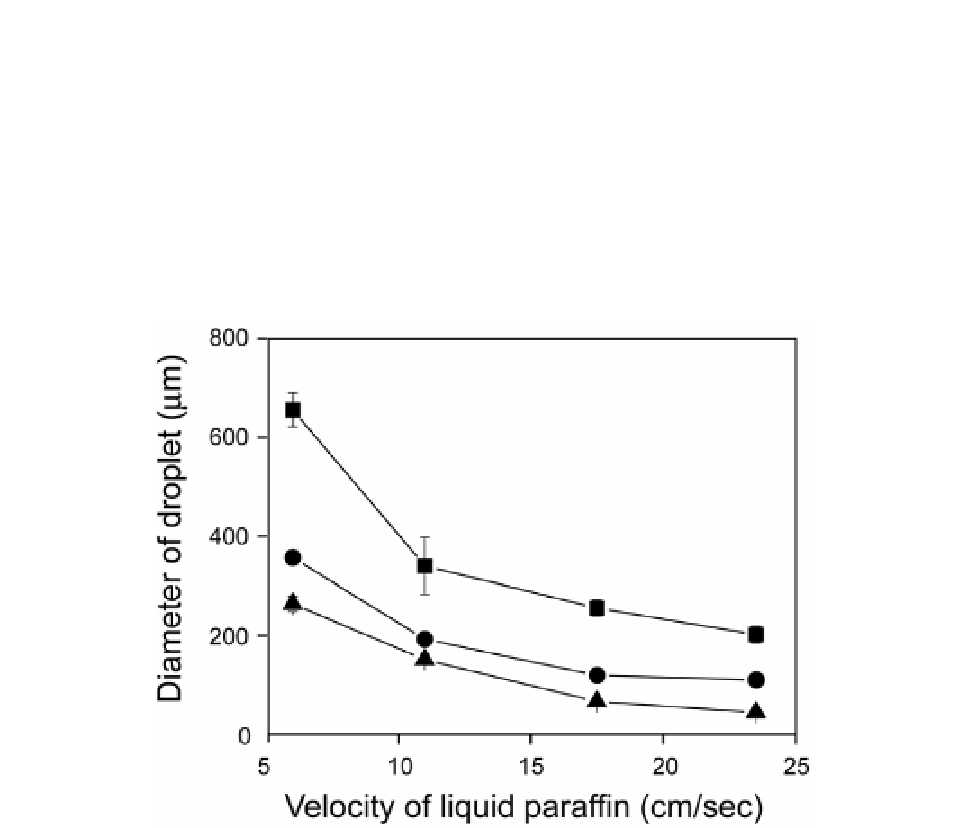Biomedical Engineering Reference
In-Depth Information
the drag force exerted by the ambient fluid and the viscoelastic force of the aqueous polymer
solution. Under the appropriate balance of the forces, a stretched jet of aqueous polymer
solution forms in the immiscible liquid. Subsequently, the jet becomes unstable due to the
interfacial tension and fragments into individual droplets. The phenomenon of droplet
breakup via jetting is explained by Rayleigh-Plateau hydrodynamic instability [33]. As shown
in Figures 2 and 4, we can obtain smaller droplets by increasing the velocity of ambient co-
flowing liquid, decreasing the velocity of aqueous polymer solution, and decreasing the
diameter of needle [28,34]. It is easy to understand the effect of velocities of liquids and
diameter of the needle on the diameter of the resultant droplets.
Figure 4. Droplet diameter as a function of liquid paraffin for three aqueous solution differing in
viscosity: (■) 1.0, (●) 36, and (▲) 194 mPa⋅s. Aqueous solutions were extruded at a velocity of 1.2
cm/sec from a needle with a 300 μm i.d. Error bars represent SDs (Reproduced with permission, from
Sakai S et al. Biotechnol Prog. [34] @ 2005 American Institute of Chemical Engineers).
In addition to these factors, viscosity of a polymer solution is also a factor influencing the
diameter of the resultant droplets [34]. As shown in Figure 4, at the velocities of liquid
paraffin and aqueous solution which were 6.0 cm/sec and 1.2 cm/sec, respectively, the
droplets obtained from the aqueous solution of 1.0 mPa⋅s were the largest and their mean
diameter was 655 μm. Droplet diameter decreased with the increasing viscosity of the
aqueous solution. This tendency was kept even under conditions of a faster flow rate of liquid
paraffin. At a liquid paraffin velocity of 23.5 cm/sec, the diameters of droplets were 202, 110,
and 44 μm for aqueous solutions of 1.0, 36 and 194 mPa s. The smaller droplets generated
from a higher viscous solution results from the formation of a thinner ligament from a higher
viscous solution [34]. This means we can obtain the microcapsules with a higher mechanical
strength resulting from a synergy of reduction in diameter and a tightening of gel microscopic
structure using a smaller quantity of ambient fluid. The droplet breakup method using liquid
paraffin as the ambient liquid also is advantageous because it only damages a small
percentage of cells. The undamaged percentages of the cells enclosed in the droplets of 110

